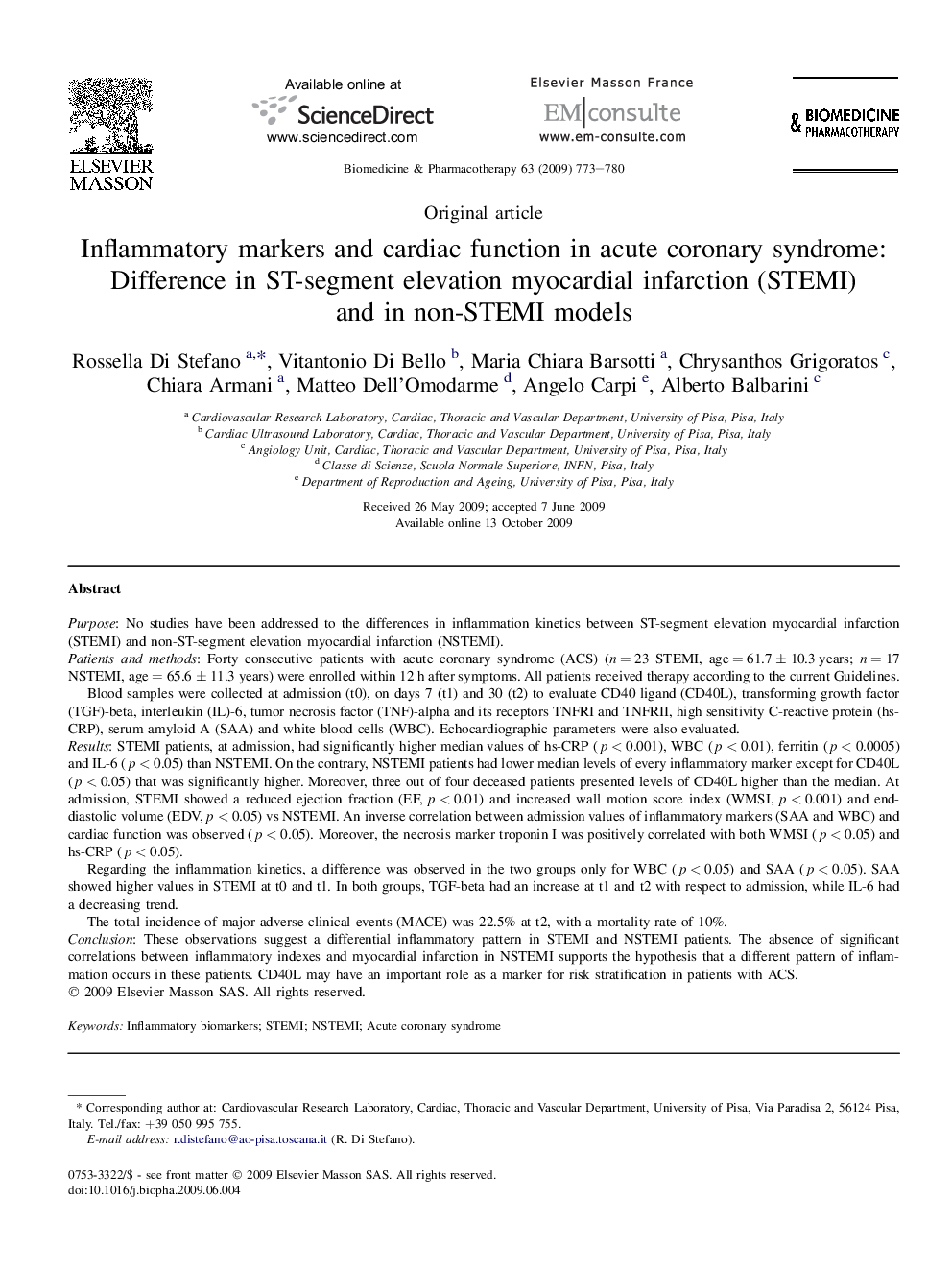| کد مقاله | کد نشریه | سال انتشار | مقاله انگلیسی | نسخه تمام متن |
|---|---|---|---|---|
| 2525171 | 1119599 | 2009 | 8 صفحه PDF | دانلود رایگان |

PurposeNo studies have been addressed to the differences in inflammation kinetics between ST-segment elevation myocardial infarction (STEMI) and non-ST-segment elevation myocardial infarction (NSTEMI).Patients and methodsForty consecutive patients with acute coronary syndrome (ACS) (n = 23 STEMI, age = 61.7 ± 10.3 years; n = 17 NSTEMI, age = 65.6 ± 11.3 years) were enrolled within 12 h after symptoms. All patients received therapy according to the current Guidelines.Blood samples were collected at admission (t0), on days 7 (t1) and 30 (t2) to evaluate CD40 ligand (CD40L), transforming growth factor (TGF)-beta, interleukin (IL)-6, tumor necrosis factor (TNF)-alpha and its receptors TNFRI and TNFRII, high sensitivity C-reactive protein (hs-CRP), serum amyloid A (SAA) and white blood cells (WBC). Echocardiographic parameters were also evaluated.ResultsSTEMI patients, at admission, had significantly higher median values of hs-CRP (p < 0.001), WBC (p < 0.01), ferritin (p < 0.0005) and IL-6 (p < 0.05) than NSTEMI. On the contrary, NSTEMI patients had lower median levels of every inflammatory marker except for CD40L (p < 0.05) that was significantly higher. Moreover, three out of four deceased patients presented levels of CD40L higher than the median. At admission, STEMI showed a reduced ejection fraction (EF, p < 0.01) and increased wall motion score index (WMSI, p < 0.001) and end-diastolic volume (EDV, p < 0.05) vs NSTEMI. An inverse correlation between admission values of inflammatory markers (SAA and WBC) and cardiac function was observed (p < 0.05). Moreover, the necrosis marker troponin I was positively correlated with both WMSI (p < 0.05) and hs-CRP (p < 0.05).Regarding the inflammation kinetics, a difference was observed in the two groups only for WBC (p < 0.05) and SAA (p < 0.05). SAA showed higher values in STEMI at t0 and t1. In both groups, TGF-beta had an increase at t1 and t2 with respect to admission, while IL-6 had a decreasing trend.The total incidence of major adverse clinical events (MACE) was 22.5% at t2, with a mortality rate of 10%.ConclusionThese observations suggest a differential inflammatory pattern in STEMI and NSTEMI patients. The absence of significant correlations between inflammatory indexes and myocardial infarction in NSTEMI supports the hypothesis that a different pattern of inflammation occurs in these patients. CD40L may have an important role as a marker for risk stratification in patients with ACS.
Journal: Biomedicine & Pharmacotherapy - Volume 63, Issue 10, December 2009, Pages 773–780